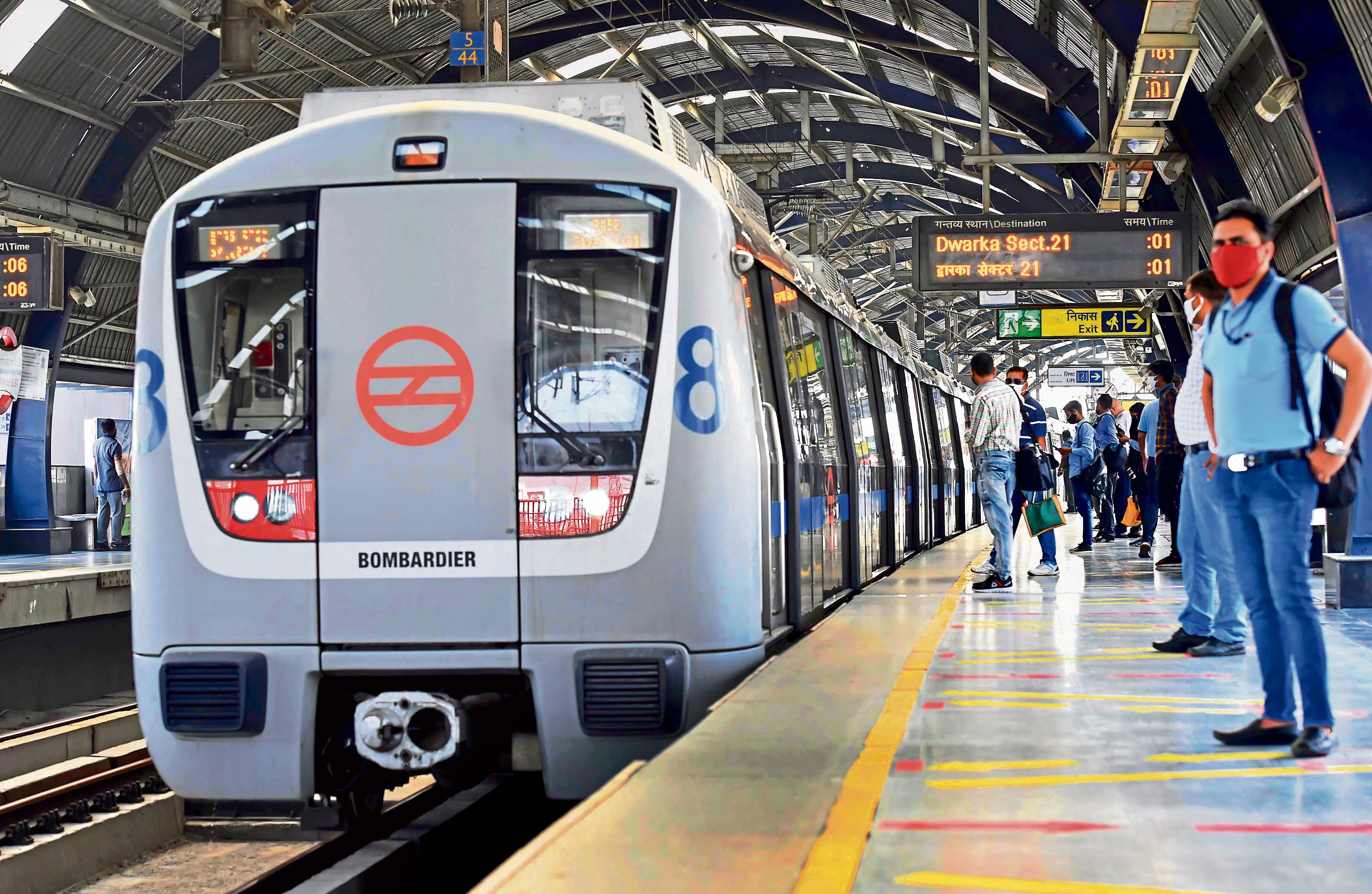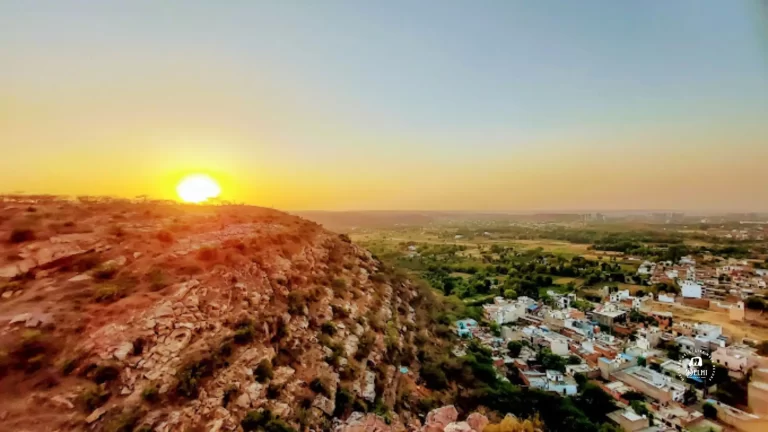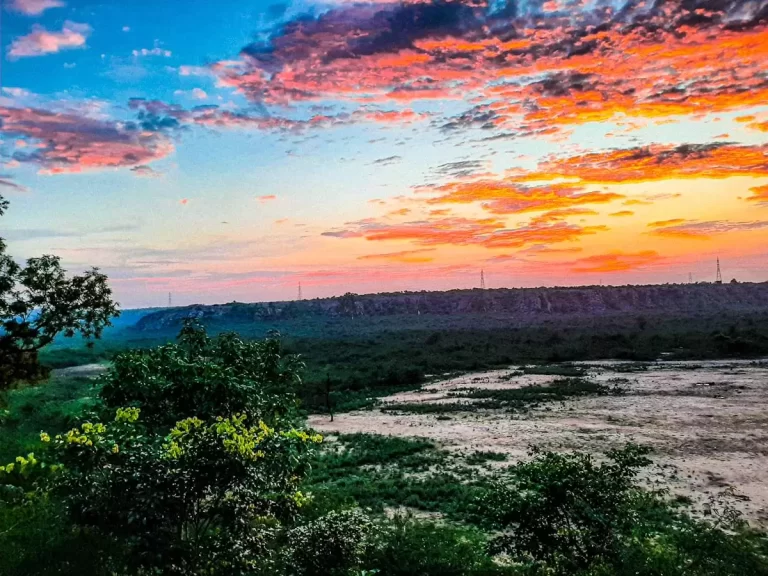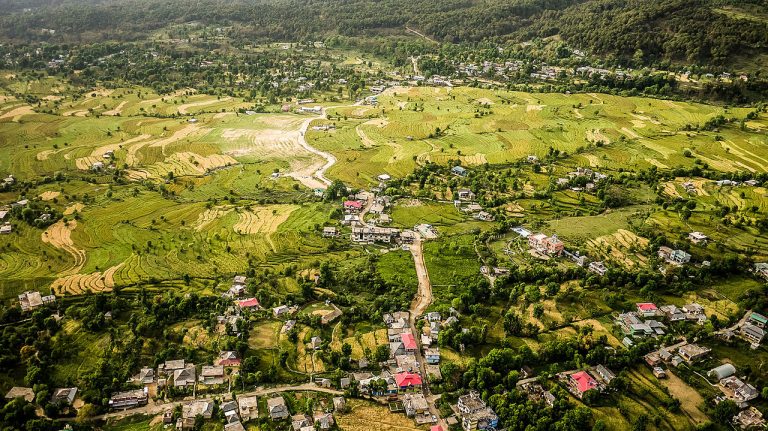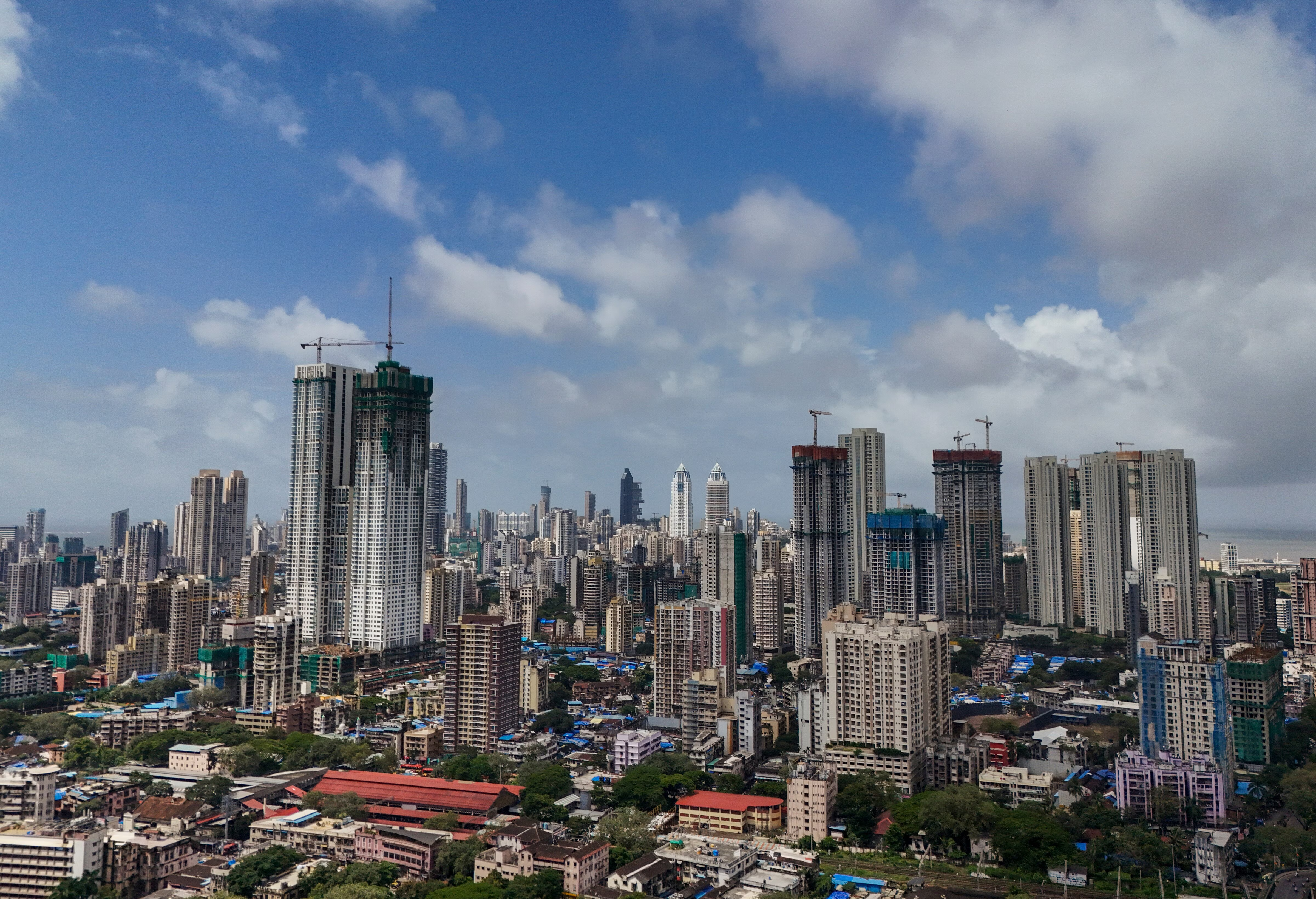Navigating Delhi can feel like stepping into a living, breathing organism and nothing captures the city’s heartbeat better than its metro network. From the oldest Red Line to the sleek Airport Express, each line tells a story: of commuters, chaos, style, and survival. Whether you’re a first-timer or a seasoned local, understanding the Delhi Metro is your shortcut to decoding the city’s rhythm. Let’s hop on, swipe our cards, and take a line-by-line tour of Delhi’s most iconic transit system.
Red Line (Rithala ↔ Shaheed Sthal)
The Red Line is the oldest workhorse of Delhi Metro. Stretching from Rithala in the west to Shaheed Sthal (New Bus Adda, Ghaziabad) in the east, it slices through Delhi like a no-nonsense artery.
Link & chill stations
- Kashmere Gate – the mother of all interchanges (connects to Yellow and Violet).
- Inderlok – hop onto the Green Line here.
- Netaji Subhash Place – switch to the Pink Line.
- Dilshad Garden / Ghaziabad stretch – the Red Line’s busy eastern lifeline.
The vibe: rough and real. Forget shiny Instagram crowds you’re traveling with a very mixed group: daily wage workers, students, families, small traders. A fair, decent crowd, but not polished. If Yellow is where people flex their Zara fits, Red is where you’ll see sweat, survival, and plastic shopping bags.
Crowd character:
You’ll mostly find families lugging endless shopping bags, laborers hauling tools or oversized luggage, and students plugged into their earbuds with backpacks in tow. Spotting someone well-dressed is rare and when it happens, they stand out like a diamond in the dust.
Mood on board:
The mood is chaotic yet efficient, with people zoning out on their phones, nodding off between stops, or rushing to squeeze in. It feels less like a metro ride and more like a commuter battlefield.
Quick trivia:
- First metro line to open in Delhi (2002).
- Runs entirely on the surface for long stretches, so you’ll get open-air views instead of endless tunnels
Green Line (Inderlok ↔ Brigadier Hoshiyar Singh)
The Green Line may not get the spotlight, but it runs deep into Delhi’s western belt, stretching from Inderlok to Brigadier Hoshiyar Singh in Bahadurgarh. A branch from Kirti Nagar links it to the Blue Line, making it one of those practical but underrated connectors.
Link & chill stations
- Inderlok – connect to the Red Line.
- Kirti Nagar – access to Blue Line.
- Ashok Park Main – the split point for both branches.
- Punjabi Bagh – a rare bright spot with better energy.
The vibe
If Red Line feels rough, Green can be rougher. It’s a no-frills ride: functional, suburban, and often dull. You won’t find style here, only survival.
The crowd
Locals, tuition-bound students, and daily commuters. The mood is practical, sometimes sleepy, sometimes rowdy. Think small-town spillover mixing with Delhi’s edges.
Fashion check
Everyday wear dominates, pajamas, casual shirts, dupattas, and sandals. “Brokie chic,” if that’s a category. No trends, no experiments.
Overall, the Green Line is Delhi Metro’s background track: essential for many, rarely glamorous, but it gets the job done.
Pink Line (Majlis Park ↔ Shiv Vihar)
The Pink Line isn’t just metal and tiles it’s Delhi’s elongated dopamine loop, stretching from Majlis Park to Shiv Vihar, slicing the city like a laser through chaos. Think of it as the metro’s unofficial “people-watching lab.”
Link & chill stations
- South Campus – student aesthetic 11/10, the unofficial runway.
- Rajouri Garden – switch to Blue Line, energy spikes.
- Netaji Subhash Place – Red Line crossover, commuter traffic galore.
- Mayur Vihar / Anand Vihar – surprisingly curated crowd; if only the views weren’t so fleeting.
- Azadpur – Yellow Line gateway, subtle flex in connectivity.
Vibe check
Long, kinetic, stylish AF. You get a blend of polished South Delhi scholars and suburban “grind-mode” commuters, making it a quantum cocktail of social energy. Spotting your “metro crush” here isn’t just serendipity; it’s statistically probable.
Crowd + drip
Students and office drones, subtly flexing sneakers, sleek backpacks, and effortlessly curated outfits. Some commuters are mid-scroll, some mid-thought, all mid-Delhi. Pajamas are rare, confidence is high.
Mood
It’s a livewire. Energy oscillates between chill and chaotic. People-watching is basically a cognitive sport. Pink Line is Delhi condensed: long, dynamic, and vibing at peak quantum potential.
Blue Line (Dwarka ↔ Noida / Vaishali)
The Blue Line is Delhi’s corporate artery, where everyone’s half-awake, half-late, and fully dependent on caffeine. It stretches from Dwarka to Noida and Vaishali, moving a crowd that looks like LinkedIn personified.
Link & chill stations
- Dwarka Sector 21 – western gateway for office-goers with three bags and zero patience.
- Rajiv Chowk / Connaught Place – chaos nucleus; odds are, you’ll board the wrong metro and question your life choices.
- Yamuna Bank – switch to the Violet Line, also where hope slowly drains.
- Noida City Centre / Vaishali – neat, clean, well-dressed commuters with tiffins and tired smiles.
Vibe
Corporate-centric to the bone. Every third guy’s got a second bag his lunchbox, obviously. Everyone’s got earbuds in, streaming web series like therapy sessions on wheels. You’ll never get a seat, but hey, it’s the only quiet hour most people get before reality kicks in.
Crowd + drip
Office professionals, students, delivery hustlers, families the crowd’s diverse, but the energy’s uniform: drained but determined. Outfits range from business casual to “I gave up two Mondays ago.”
Mood
Efficient, robotic, and lowkey iconic. The Blue Line may not smile, but it runs like clockwork Delhi’s second-most important lifeline after Yellow, and easily the most overworked.
Yellow Line (Samaypur Badli ↔ HUDA City Centre)
The Yellow Line is Delhi Metro’s hyper-artery, pumping commuters from Samaypur Badli to HUDA City Centre. It connects some of the city’s and India’s most important nodes: Connaught Place, Qutub Minar, and HUDA City Centre. Think of it as the metro equivalent of a perfectly curated LinkedIn feed: professional, polished, and oddly photogenic.
Link & chill stations
- Samaypur Badli – northern terminus, starting point for the ultimate commuter marathon.
- Rajiv Chowk / Connaught Place – heart of Delhi; energy spikes, business suits galore.
- Chandni Chowk – tourist chaos meets local hustle, pure Delhi overload.
- Qutub Minar / HUDA City Centre – southern stretch, polished office crowd, Instagram-worthy glimpses.
- Central secret: north-south connectivity makes it the artery for both work and wanderlust.
Crowd calculus
Daytime there’s maximum density, but here’s the twist: the crowd is surprisingly agreeable. Office professionals, mall-hopping tourists, and smartly dressed shoppers dominate. You’re jostled, yes, but mostly by people who seem socially calibrated.
Drip check
Semi-formal, smart-casual, polished shoes on point. No pajama-clad chaos here. Watches, bags, and a little subtle flex are all present.
Mood
Fast-paced, mildly impatient, but with finesse. This isn’t Red Line hustle or Green Line “grind mode” it’s efficient, slightly elite chaos. People glance up from laptops, scroll through feeds, or simply radiate commuter confidence.
Quick flex
- Connects north to south Delhi like a spine.
- Best odds of spotting well-dressed strangers without feeling like a creep.
- Perfect line for “peak people-watching productivity.”
Magenta Line (Janakpuri West ↔ Botanical Garden)
The Magenta Line is basically Delhi Metro’s glow-up: sleek, smooth, slightly futuristic and fully automated, because drivers are so 2010. Riding it feels like starring in a low-key sci-fi movie with chai stalls at every stop.
Link & chill stations
- Janakpuri West – western terminus, commuter chaos meets techy calm.
- Botanical Garden – South Delhi vibes, sleek architecture, Instagram-ready.
- Hauz Khas / MG Road stretch – the unofficial runway for polished students and young pros.
- Nehru Enclave / Kalkaji Mandir – subtle energy spikes, where tech-savvy commuters cluster.
- Botanical Garden interchange – connects to Blue Line; perfect flex in connectivity.
Crowd check
Hands down the best crowd: young professionals, tech-savvy students, and anyone who makes commuting look effortless. Everyone seems to own an iPhone.
Fashion radar
Polished casuals everywhere: athleisure, smart-casual office wear, and sneakers that could double as performance art. This line is basically a runway for “effortless cool.”
Metro gotcha
If you hop on from Rajiv Chowk, brace yourself: chances are you might board the wrong train. Peak hours amplify the chaos, seats are scarce, and personal space is basically a myth.
Mood
Chill, confident, aspirational. No chaos, no drama just a smooth, curated commute connecting South Delhi in style.
Fun flex
- Fully automated: no driver, no delays (mostly).
- Perfect for scrolling, people-watching, or pretending you’re in a travel vlog.
- Best odds of seeing a commuter who actually looks like they own their life.
Airport Express Line (New Delhi ↔ Dwarka Sector 21)
The Airport Express Line is Delhi Metro’s VIP lounge on rails calm, serene, and disturbingly efficient. It runs from New Delhi to Dwarka Sector 21, whisking passengers straight to the airport with zero drama.
Link & chill stations
- New Delhi – major hub, easy airport transfer.
- Dwarka Sector 21 – western terminus, suburban calm meets travel-ready crowd.
Vibe
Exclusive, peaceful, and polished. Forget the chaos of the city it’s just you, your luggage, and the soft hum of automation.
Crowd + drip
Business travelers, tourists, and anyone who thinks carry-on bags are a lifestyle. Designer handbags, sunglasses, and sharp suits abound.
Mood
Quiet, composed, almost meditative. Boarding feels like entering a VIP capsule where speed, comfort, and minimal social friction are standard perks.
Fun flex
- Seats are easy to snag.
- Perfect line for scrolling, people-watching (subtly), or practicing your runway walk with luggage.

